#palais barberini
Explore tagged Tumblr posts
Text
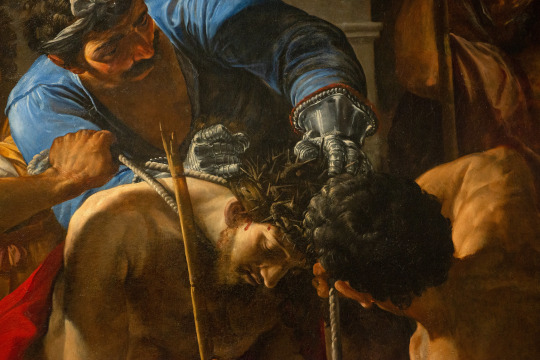
Leonello Spada (Italian, 1576-1622) Le Couronnement d'épines, Détail, 1620 Galerie nationale d'Art ancien Palais Barberini, Rome “And the soldiers twisted together a crown of thorns and put it on His head and put a purple robe on Him” (John 19:2). The accounts of this happening in the Gospels of Matthew, Mark, and John are intense. One can only imagine the pain and suffering Jesus Christ endured.
#Leonello Spada#italian art#italian#italy#1600s#art#european art#fine art#classical art#europe#oil painting#european#fine arts#europa#mediterranean#the crowning of thorns#Jesus Christ#The Son of God#The son of Man#christianity#christentum#catholic#Jesus
61 notes
·
View notes
Text






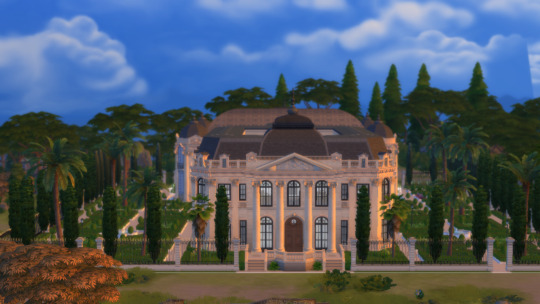
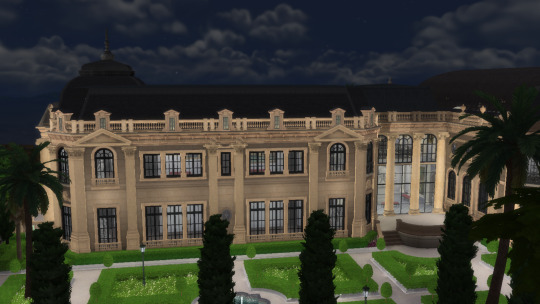

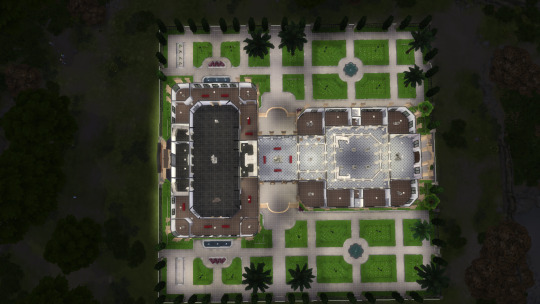
Chile National Museum of Fine Arts
Hello guys!
I leave this here. This is the chilean Museum of Fine Arts.
Some history:
The Palace of the Fine Arts (el Palacio de Bellas Artes), dates to 1910 and commemorates the first centennial of the Independence of Chile. It was designed by the Chilean architect Emile Jéquier in a full-blown Beaux-arts style and is situated in the Parque Forestal of Santiago.
The Palacio de Bellas Artes, the current home of the Museum, is in the Neoclassical Second Empire style and the Baroque Revival style, strongly reinforced with Art Nouveau details and touches of metallic structural architecture. The central entrance is through a gigantically enlarged version of Borromini's false-perspective window reveals from Palazzo Barberini, which encloses a pedimented doorway entirely surrounded by glass, a Beaux-Arts touch. Through a broken pediment the squared cupola rises to the top. The internal layout and the facade are both modelled after the Petit Palais of Paris. The glass cupola that crowns the central hall was designed and manufactured in Belgium and brought to Chile in 1907. The approximate weight of the armour of the museum is 115,000 kg, of the glass of the cupola, 2,400 kg.
Architectonically, the floorplan of the museum is one of a central axis marked by the entrance and a grand hall with a staircase to the second floor. In the grand hall, above a balcony from the second floor, there is a carving in high relief which depicts two angels supporting a shield. They are located in the semi-vault above the heads of two Caryatids that arise from the balcony, carved by Antonio Coll y Pi.
------------------------------------------------------------------------------------------
You will need a 64x64 lot and the usual CC that I use.
I took some liberties because I laked the resources to make it identical to the original.
IMPORTANT - you will need to change the usage because I allready had a family living in the lot and did not want to evict them.
I will be sharing the same building with a parliament configuration and a home configuration, so you can chose the one that fits your game :)
Please let me know if you like it and tag me if you share my buildings in your stories that I really enjoy!
Have a great day!
DOWLOAD: https://www.patreon.com/posts/86664913?pr=true
(early access: 7/28/2023)
#sims 4 architecture#sims 4 build#sims4#sims4palace#sims 4 screenshots#sims4play#sims 4 historical#sims4building#sims4frencharchitecture#sims 4 royalty#ts4 screenshots#ts4 build#ts4cc#ts4 download#ts4#sims 4#the sims 4#ts4 gameplay
58 notes
·
View notes
Text

Michelangelo Merisi
"Il Caravaggio"
"NARCISSE"
1597-1599
Palais Barberini Rome
20 notes
·
View notes
Text
Hasso Plattner: Innovator, Mentor, Kunstförderer
Hey Tumblr-Community! Heute, in der allerersten Biographie meines kleinen Blogs, nehme ich euch mit auf eine Reise durch das Leben von Hasso Plattner, einem der Köpfe hinter dem Software-Riesen SAP und einem echten Visionär in Technologie und Kunst.
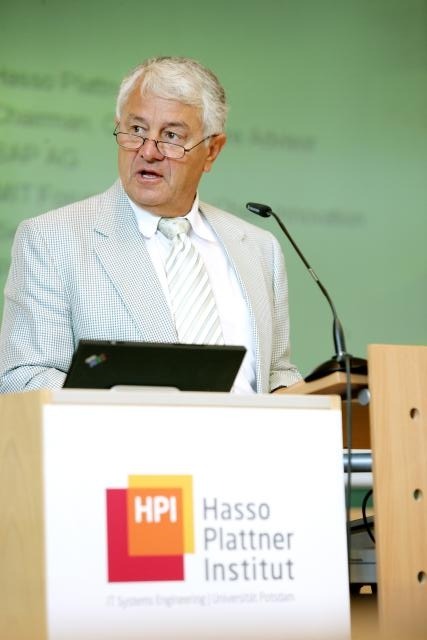
Vom Berliner zum Global Player
Geboren am 21. Januar 1944 in Berlin, hat Hasso Plattner mehr erreicht, als die meisten von uns in einem Dutzend Leben könnten. Nach seinem Nachrichtentechnikstudium an der Universität Karlsruhe startete er seine Karriere bei IBM, aber das war ihm nicht genug. 1972 zog er weiter und gründete SAP, einen Namen, den heute jeder kennt, der auch nur entfernt etwas mit Unternehmenssoftware am Hut hat.
Professor und mehr
Aber Plattner ist nicht nur ein Business-Mogul. Er hat auch die akademische Welt erobert. Seit den 90ern verknüpft er als Professor die Welten von Wirtschaft und Wissenschaft. Das Highlight? Sein eigenes Institut, das Hasso-Plattner-Institut für Softwaresystemtechnik in Potsdam, das er 1998 ins Leben rief. Dort formt er die nächste Generation von IT-Leadern, die unsere digitale Welt gestalten werden.
Ein Herz für die Kunst
Und falls ihr dachtet, das wäre alles: Nein! Plattner hat auch eine tiefe Leidenschaft für Kunst und Kultur. 2017 eröffnete er das Museum Barberini in Potsdam, ein Kunsthaus, das sich nicht nur durch seine beeindruckende Sammlung von Impressionismus bis zur zeitgenössischen Kunst auszeichnet, sondern auch durch seine Geschichte – es steht auf den Trümmern eines im Krieg zerstörten Palais.
Bleibende Eindrücke
Nicht nur in der Kunstwelt hat Plattner Spuren hinterlassen. Das MINSK KUNSTHAUS, ein weiteres kulturelles Projekt in Potsdam, kombiniert Kunst aus der DDR-Zeit mit zeitgenössischen Werken und bietet einen einzigartigen Einblick in die deutsche Geschichte.
Anerkennung, die sich gewaschen hat
Hasso Plattner ist nicht nur ein Macher, sondern auch ein vielfach Geehrter. Von Ehrendoktortiteln bis zum renommierten Werner-von-Siemens-Ring, seine Liste der Auszeichnungen ist so lang wie beeindruckend.
So, liebe Leute, das war ein kurzer Einblick in das faszinierende Leben von Hasso Plattner. Von Technologie über Bildung bis hin zur Kunst hat dieser Mann wirklich alles berührt, was unsere moderne Welt prägt. Lasst euch von seiner Geschichte inspirieren, denn wie Plattner zeigt, gibt es keine Grenzen, außer denen, die wir uns selbst setzen!
1 note
·
View note
Video
instagram
The Museum Barberini/Potsdam posted this little vid to show you the snow that finally arrived at the old market of Potsdam.
#Germany#Deutschland#Berlin#Potsdam#Old Market Potsdam#Alter Markt Potsdam#Snow#Winter in Potsdam#Museum barberini Potsdam#Barberini Palace Potsdam#Palais Barberini Potsdam
4 notes
·
View notes
Photo


Potsdamer Sehenswürdigkeiten - Places of Interest
1 note
·
View note
Photo

DIGNE DE LA BIBLIOTHÈQUE MAZARINE À L'INSTITUT DE FRANCE Giovanni Francesco Romanelli, dit Viterbese ou Raffaellino, né à Viterbe vers 1610, connut un succès considérable à Rome, sous le protectorat de la puissante famille Barberini, jusqu'à ce qu'il soit élu prince de la prestigieuse Académie de Saint-Luc en 1639. Avec l'ascension du pape Innocent X au trône papal, la famille Barberini tomba en disgrâce et Romanelli perdit sa protection influente. Commence alors la deuxième phase de sa carrière artistique : appelé à travailler à Paris par le cardinal Mazarin, il peint un cycle de fresques sur le thème des Métamorphoses d'Ovide et les appartements d'Anne d'Autriche, mère de Louis XIV, au palais du Louvre. , on peut admirer le plafond d'une pièce des appartements d'été. "Mazarinade: La chasse donnée à Mazarin par les paysans des bourgs et des villages sur le tocsin" https://youtu.be/UE3lXq49wLE #culturejaiflash https://www.instagram.com/p/CSGtROJjmDH/?utm_medium=tumblr
2 notes
·
View notes
Photo

Bauwelt issue 18.2017 “Potsdamer Positions” published on August 8th, 2017
#bauwelt magazine#german architectural magazine#architectural magazin#bauwelt#issue 18.2017#editorial office bauwelt#editorial office berlin#Wissenschafts- und Restaurierungszentrum#potsdam#staab architekten#blu#pool#gmp#biosphäre#Blumenhalle 17#barkow leibinger#palais barberini#Hilmer & Sattler und Albrecht#zanderrotharchitekten#berlin
0 notes
Text

Judith décapitant Holopherne, vers 1600, de Michelangelo Merisi, dit le Caravage (1571-1610). Huile sur toile, 145x195 cm. Palais Barberini, Rome.
1 note
·
View note
Text








Castel Gandolfo - explore the hidden gems
Just 12 miles outside of Rome stands the town of Castel Gandolfo, home to the Papal Residence for over 400 years.
Once at Castel Gandolfo, you’ll walk to the Papal residence, Vatican ecological open bus for an hour around the Barberini Gardens, Apostolic Palace, Papal apartments, see the Holy Father’s library, Shops, coffee... on the Lake Albano...and much more.
***Castel Gandolfo - explorez les joyaux cachés
À seulement 20 kilomètres de Rome se trouve la villa de Castel Gandolfo, qui abrite la résidence papale depuis plus de 400 ans.
Une fois à Castel Gandolfo, vous marcherez jusqu'à la résidence papale, bus écologique du Vatican pendant une heure autour des jardins Barberini, palais apostolique, appartements papaux, voir la bibliothèque du Saint-Père, les magasins, le café ... sur le lac d'Albano.. .et beaucoup plus.
Castel Gandolfo - explora las gemas ocultas
A solo 12 millas a las afueras de Roma se encuentra la ciudad de Castel Gandolfo, hogar de la Residencia Papal durante más de 400 años.
Una vez en Castel Gandolfo, caminarás hasta la residencia papal, el autobús ecológico abierto del Vaticano durante una hora alrededor de los jardines Barberini, el palacio apostólico, los apartamentos papales, ver la biblioteca del Santo Padre, tiendas, café ... en el lago Albano .. .y mucho más.
***Kastiel Gandolfo - preskúmajte skryté drahokamy
Len 12 míľ od Ríma stojí mesto Castel Gandolfo, ktoré je domovom pápežskej rezidencie viac ako 400 rokov.
Keď ste v Castel Gandolfo, prejdete sa k pápežskej rezidencii, vatikánskemu ekologickému autobusu na hodinu okolo záhrad Barberini, Apoštolského paláca, pápežských bytov, pozrite si knižnicu Svätého Otca, obchody, kaviareň ... pri jazere Albano .. .a oveľa viac.
0 notes
Photo

Pietro da Cortona (Italian, 1596-1669) Le Triomphe de la Divine Providence, 1633-1639 Galerie nationale d'Art ancien Palais Barberini, Rome
#ceiling fresco#european#italy#mediterranean#european art#fresco#art#fine art#classical arat#le triomphe de la divine providence#triumph of divine providence#pietro da cortona#italian#italian peninsula#1500s#1600s#europe#europa#heavens#heaven#public domain
411 notes
·
View notes
Text
Touren für Architektur-Liebhaber. Wer mag schöne Häuser gucken? Häuser, die viel über ihre Bewohner Aussagen. Eine Vielfalt der Architekturstile.
Altstadt Potsdam zu Fuß erkunden
Panoramabild: Potsdam Am Alten Markt
Alter Markt mit repräsentativen Bauten, Nikolaikirche, altes Rathaus, Barberini-Museum, Landtag. Potsdam hat viel zu bieten.
Kontrastprogramm: Holländisches Viertel.
Potsdam: Holländisches Viertel
Eine holländische Reihenhaussiedlung, schön, hat aber den Holländern nicht gefallen. Sie bekamen Heimweh und gingen zurück in ihre Heimat. Geblieben sind die Backsteinhäuser mit den charakteristischen Giebeln.
Mit dem Rad rund um Sanssouci und die benachbarten Schlösser.
Die Fahrräder kann man mieten, sogar mit Führer. Mit dem Rad fahren wir um den ganzen Schlossgarten herum. Gut ausgebaut ist der Weg, aber voller Baumwurzeln. Sie zeigen uns das Alter des Gartens an.
Panoramabild: Torhaus in Potsdam Sanssouci, Neues Palais
Was sehr feudal wie ein Schloss aussieht, ist lediglich ein Vorhaus. Diesen Anblick erhalten die Schlossbesucher, wenn Sie mit Ihrer Kutsche wieder heimfahren. Pracht, Macht, Selbstdarstellung auf der einen, Minderwertigkeitsgefühle und Neid auf der anderen Seite sind hier vorprogrammiert.
Ein Kontrastprogramm bietet das russische Viertel.
Potsdam: Holzhaus im Russischen Viertel
Die Holzhäuser werden bis zum heutigen Tage noch bewohnt. Eines davon ist als Museum zu besichtigen. Sogar ein kleines Café ist dort vorhanden, bei dem man unter Obstbäumen seinen Kaffee schlürfen kann.
Einen weiteren Höhepunkt bildet das Lustschloss Belvedere auf dem Pfingstberg.
This slideshow requires JavaScript.
Das Schloss sieht nicht nur von außen gut aus, auch die innere Ausstattung ist ein Schmuckstück. Bemalte Decken, Wendeltreppen mit geschmiedeten Treppengeländer, Kassettendecken. Und die Aussicht – phänomenal!
Potsdam vom Wasser aus erleben.
Um Potsdam herum liegen verschiedene Seen, die durch Kanäle miteinander verbunden sind. Die Siedlung ist im Grunde genommen eine große Insel. Es lohnt sich, diese Stadt einmal auf dem Wasser zu umrunden. In der Marina können Touristen Boote mieten. Paddelboote zum selber paddeln, Yachten zum selber fahren und wer sich fahren lassen möchte, mietet sich ein Floß.
This slideshow requires JavaScript.
Wer vom Fluss aus schöne Häuser sehen will, hat gute Karten. Das Theater von außen sieht schon fast zu futuristisch aus – ein Hauch vom Opernhaus in Sydney. Möglichst nah am Ufer sollte bleiben, wer sich für Villen und deren Bewohner begeistert. Mit einem bisschen Glück läuft den Wassersportlern vielleicht der eine oder andere Promi vor die Linse, sofern die sich bei regem Schiffsverkehr in den Garten hinauswagen.
Eines zeichnet Potsdam mit Sicherheit aus: ein hoher Freizeitwert.
[content_block slug=pressereise-potsdam]
Mehr zum Thema Potsdam: [RSSImport display=”5″ feedurl=”https://www.8ung.info/tag/potsdam/feed/” before_desc=” ” displaydescriptions=”TRUE” after_desc=” ” html=”FALSE” truncatedescchar=”200″ truncatedescstring=” … ” truncatetitlechar=” ” truncatetitlestring=” … ” before_date=” ” date=”FALSE” after_date=”” date_format=”” before_creator=” ” creator=”FALSE” after_creator=”” start_items=”
” end_items=”
” start_item=”
” end_item=”
” target=”” rel=”” desc4title=”” charsetscan=”FALSE” debug=”FALSE” before_noitems=”
” noitems=”No items, feed is empty.” after_noitems=”
” before_error=”
” error=”Error: Feed has a error or is not valid” after_error=”
” paging=”FALSE” prev_paging_link=”« Previous” next_paging_link=”Next »” prev_paging_title=”more items” next_paging_title=”more items” use_simplepie=”FALSE”]
☛ Potsdam zu Fuß, mit dem Rad, auf dem Wasser Touren für Architektur-Liebhaber. Wer mag schöne Häuser gucken? Häuser, die viel über ihre Bewohner Aussagen. Eine Vielfalt der Architekturstile.
#Architektur#Fahrrad#Marina#Panoramafoto#Potsdam#Pressereise#Radfahrer#Schloss Belvedere#Schloss Sanssouci#Wasser
1 note
·
View note
Photo

Cour d'honneur
Blenheim Palace, The cour d'honneur is the large axial entrance court framed by the secondary wings containing kitchens and domestic offices flanking the corps de logis Louis Le Vau opened up the interior court of the Chateau de Versailles to create the expansive entrance cour d'honneur, subsequently copied all over Europe. Cour d'honneur (French pronunciation: [kuʁ dɔnœʁ], court of honor) is the architectural term for a three-sided courtyard, created by flanking the main central block, or corps de logis, with symmetrical advancing secondary wings containing minor rooms. The Palace of Versailles (illustration) and Blenheim Palace (plan) both feature such entrance courts. Some 16th-century symmetrical Western European country houses built on U-shaped groundplans resulted in a sheltered central door in a main range that was embraced between projecting wings, but the formalized cour d'honneur is first found in the great palaces and mansions of 17th-century Europe, where it forms the principal approach and ceremonial entrance to the building. Its open courtyard is presented like the classical permanent theatre set of a proscenium stage, such as the built Roman set of opposed palazzi in a perspective street at Palladio's Teatro Olimpico (Vicenza, 1584). Like the theatre set the built environment is defined and enclosed from the more public space by ornate wrought iron gilded railings. A later development replaced the railings with an open architectural columnar screen, as at Palais Royal (Paris), Schönbrunn Palace (Vienna), Charlottenburg Palace (Berlin), Alexander Palace (Saint Petersburg), or Henry Holland's Ionic screen formerly at Carlton House, London (illustrated below). Henry Holland's Ionic screen fronts a shallow cour d'honneur at the Prince Regent's Carlton House in Pall Mall, London Technically, the term cour d'honneur can be used of any large building whether public or residential, ancient or modern, which has a symmetrical courtyard set apart in this way, at which the honored visitor arrives. (The rest may arrive without flourish, through a side entrance.) Examples of a cour d'honneur can be found in many of the most notable Baroque and classicizing buildings of Europe including the Palazzo Pitti, one of the first 16th century residences to open a cour d'honneur—in the Pitti's case by embracing three sides of an existing public space. Other 16th century urban palazzi remained resolutely enclosed, like Palazzo Farnese, Rome. In Rome, the wings of Carlo Maderno's Palazzo Barberini design (1627), were the first that reached forward from a central block to create a cour d'honneur floorplan. Palazzo Barberini: without railings the entrance court is still public space. On a condensed, urban scale the formula is expressed in Parisian private houses, hôtels particuliers built entre cour et jardin (pronounced: [ɑ̃ːtʁ kuːʁ e ʒaʁdɛ̃]), between court and garden. In these plans, the street front may be expressed as a range of buildings not unlike the ordinary houses (maisons) that flank it, but with a grand, often arched, doorway, through which a carriage could pass into the cour d'honneur secreted behind. In a cramped site, one of the flanking walls of the cour d'honneur may be no more than an architectural screen, balancing the wing of the hôtel opposite it, which would often contain domestic offices and a stable. On a grander scale, the Palais Royal was laid out in just this manner, among the first Paris hôtels particuliers to have a cour d'honneur, which once was separated from the public street by a wrought iron grille, later by an open architectural screen, with its grand open jardin behind, now a public space. Nearby, the Tuileries Palace is gone: but the cour d'honneur with its Arc du Carrousel remains, as do the Tuileries Gardens behind the former palace's site. The Villard Houses facing Madison Avenue, New York In densely built cities disposed on a rigorously democratic grid plan such as New York, private houses with a cour d'honneur were rare, even in the Gilded Age; the Villard Houses on Madison Avenue and the former William K. Vanderbilt House on the Plaza were the rare exceptions. In London, Burlington House retains its cour d'honneur as does Buckingham Palace, but here the cour d'honneur is now hidden behind Edward Blore's much photographed east façade, of 1847, which faces the Mall and now encloses it. The cour d'honneur, now known as The Quadrangle, still retains the principal entrance to the palace however. More details Android, Windows
2 notes
·
View notes
Photo

Camminando per Roma (Palazzo Barberini) ☀️ Segui i miei reportage fotografici e i viaggi enogastronomici su facebook.com/fotografiavinocioccolato ☀️ #monochrome #rome #monochromephotography #blackandwhite #walkinginrome #roma #photography #monochromestyle #streetphotography #blackandwhitephotography #bnw #contrastphotography #discoveryart #monochromatic #bw #visitrome #urbanphotography #bnwphotography #architecture #solocosebelle #italiainunoscatto #cultural #architecture_hunter #palazzobarberini #archidaily #artmuseum #architecture #palazzobarberini #romanarchitecture (at Palais Barberini) https://www.instagram.com/p/BvGqNh7F_C9/?utm_source=ig_tumblr_share&igshid=1fkuxo8u6aui6
#monochrome#rome#monochromephotography#blackandwhite#walkinginrome#roma#photography#monochromestyle#streetphotography#blackandwhitephotography#bnw#contrastphotography#discoveryart#monochromatic#bw#visitrome#urbanphotography#bnwphotography#architecture#solocosebelle#italiainunoscatto#cultural#architecture_hunter#palazzobarberini#archidaily#artmuseum#romanarchitecture
0 notes
Link
The 17th-century Theological Hall makes up one of two sections of the magnificent library within the Strahov Monastery in Prague, Czech Republic.
“The Art of Looking Up” details the significant stories of spectacular ceilings, from Sweden and Las Vegas to Spain and Iran.
Whether or not you’re especially interested in architecture, traveling to an unfamiliar destination often involves at least some time spent marveling over impressive buildings and landmarks. The ways that structures have been designed throughout history and across cultures can reveal much about the societies and times in which they were constructed. A book titled The Art of Looking Up (White Lion Publishing, 2019) focuses on one aspect in particular: the world’s most beautiful ceilings.
Divided into four thematic sections—Religion, Culture, Power, and Politics—the 240-page book surveys a collection of spectacular ceilings around the globe and shares their stories, as detailed by art history expert Catherine McCormack, along with vibrant photography. The book includes information and important historical context about popular overhead artworks such as the painted dome of the Sistine Chapel in Vatican City (completed by Michelangelo in 1512); the Chihuly glass masterpiece on the ceiling of the Bellagio Hotel in Las Vegas; and the striking stained-glass and stone interiors of Barcelona’s Sagrada Família (the still-unfinished basilica that marks Catalan architect Antoni Gaudí’s final design).
In addition to celebrating some of the world’s most famous ceilings, the book spotlights somewhat lesser-visited ceiling art in religious buildings, libraries, concert halls, and metro stations where mosaic tile masterpieces and intricate oil paintings will almost surely make you crane your neck. Here’s a look at just a few worth visiting from inside the pages of The Art of Looking Up.
T-Centralen Metro Station Stockholm, Sweden
Beginning in the 1950s, a citywide project transformed a number of Stockholm’s commuter hubs into cultural spaces by infusing the underground metro stations with lively wall and ceiling art. (Around 150 artists have contributed mosaics, paintings, and sculptures to more than 90 of the city’s 110 metro stations to date.) T-Centralen, the city’s main subway hub, was the first location to feature tile-covered walls when it opened in 1957. About two decades later, the Finnish-Swedish artist Per-Olov Ultvedt made his mark on the space, adding blue-and-white ceiling murals inspired by the calming aesthetic of the Greek Isles. To visit Stockholm’s colorful subway system, nicknamed “the world’s longest art exhibit,” all you have to do is purchase a metro ticket.
Church of the Resurrection of Christ St. Petersburg, Russia
This elaborate St. Petersburg landmark marks the spot where Tsar Alexander II, the emperor of Russia, was fatally assassinated in March 1881. Construction of the church, also known as the Church of the Savior on Spilled Blood, began in 1883 and took 24 years to complete. Its ceiling and interior walls are decorated with a slew of semi-precious stones such as jasper and topaz that together comprise a radiant mosaic spanning more than 75,350 square feet. As one of the main tourist attractions in St. Petersburg, this traditional Russian Orthodox church does not function as a full-time place of worship. Visitors can purchase tickets to explore the cathedral-and-memorial-turned-mosaics-museum during its designated hours of operation.
Strahov Monastery Prague, Czech Republic
Prague’s Strahov Monastery, which dates back to 1140, houses one of the world’s most beautiful libraries—with the second-oldest collection of books in the Czech Republic. Designed by Abbot Jeroným Hirnheim, the Strahov library contains two sections: the 17th-century Baroque Theological Hall and the 18th-century Classical Philosophical Hall. Inside both halls, ornate frescoes illustrate biblical scenes depicting the importance of acquiring wisdom. Visitors can purchase tickets for daily tours of the exquisite library halls, but group sizes are limited in order to protect the historic space.
Würzburg Residence Würzburg, Germany
Built in southern Germany between 1720 and 1744 (and completed in 1780), this former residence of Johann Philipp Franz and Friedrich Karl von Schönborn—two successive prince bishops of Würzburg—is a designated UNESCO World Heritage Site. Inside the 18th-century Baroque palace, a staircase with an impressive unsupported-vaulted ceiling features a fresco by the Venetian painter Giovanni Battista Tiepolo. During the property’s designated seasonal hours, ticketed admission is available for self-led tours of various rooms in the residence. (Guided tours are also available in English and German.)
See the other locations featured in The Art of Looking Up, listed below:
Neonian Baptistery, Italy
Sagrada Família, Spain
Imam Mosque, Iran
Vatican Palace, Italy
Church of the Buckle, Turkey
San Pantalon, Italy
Debre Berhan Selassie Church, Ethiopia
Senso ̄-ji Temple, Japan
Palais Garnier, France
Burgtheater, Austria
Louvre Museum, France
Dalí Theatre-Museum, Catalonia
National Theatre, Costa Rica
Uffizi Gallery, Italy
Toluca Botanical Garden, Mexico
Bellagio Hotel and Casino, USA
Banqueting House, United Kingdom
Alhambra Palace, Spain
Palazzo del Te, Italy
Badal Mahal, India
Palazzo Barberini, Italy
Topkapı Palace, Turkey
Blenheim Palace, United Kingdom
Palazzo Chiericati, Italy
Royal Palace of Brussels, Belgium
Chinese Palace, Russia
Palazzo Farnese, Italy
Augsburg Town Hall, Germany
City Hall, Barcelona
Old Royal Naval College, United Kingdom
United Nations Office, Switzerland
Museum of the Revolution, Cuba
Palazzo Ducale, Italy
Capitol Building, USA
The History Behind Some of the World’s Most Beautiful Ceilings
https://getpocket.com/explore/item/the-history-behind-some-of-the-world-s-most-beautiful-ceilings
More Stories from Pocket
The Reason Why No Photography is Allowed in the Sistine Chapel
14 Lesser-Known Ancient Sites Worth Building a Trip Around
The Long History of How Jesus Came To Resemble a White European
0 notes
